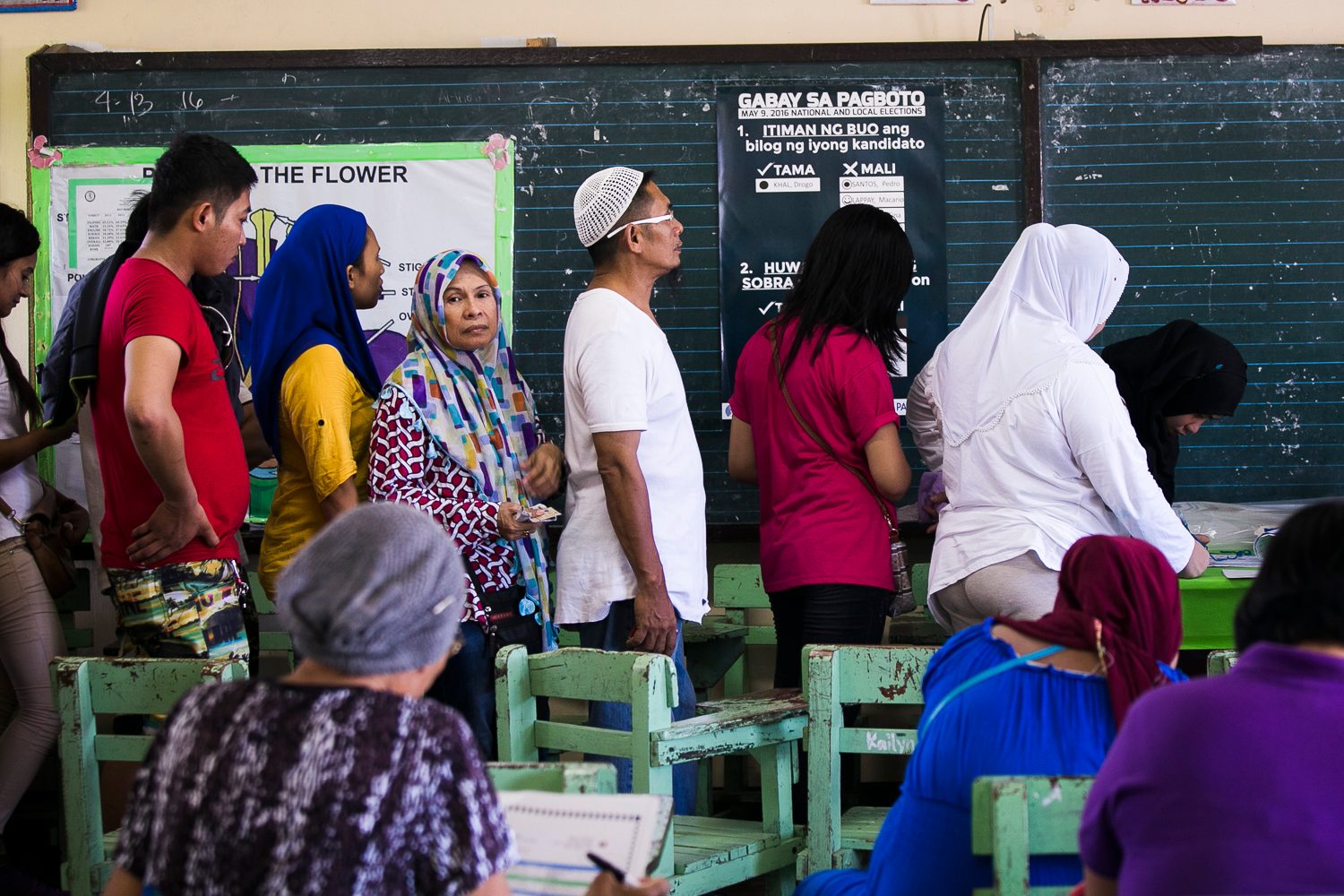SUMMARY
This is AI generated summarization, which may have errors. For context, always refer to the full article.

MANILA, Philippines – On the evening of election day, May 9, the Commission on Elections (Comelec) announced that 84% of 54,363,329 Filipino voters trooped to polling precincts.
Data from the Comelec’s Transparency Server also showed that 116 polling precincts from 18 provinces posted 100% voter turnout rates. (READ: More than 100 precincts report 100% voter turnout)
Some watchdogs have viewed high turnouts with suspicion, seeing it as a possible indicator of poll cheating. But a sociologist believes the personalities of this year’s candidates may have influenced more voters to troop to their polling precincts.
Turnout over the years
In a previous report, Rappler’s Jodesz Gavilan wrote that voter turnout has been fluctuating despite the increase in number of registered voters.
Between 1992 and 2016, the highest voter turnout was during the 1998 presidential election, which Joseph Estrada won. Around 86.1% or 29,474,309 out of 34,117,056 registered voters cast their ballots.
The turnout then dropped in the 2001 midterm polls. That year, 76.3% or 27,737,268 out of 36,354,898 voters went to their polling precincts.
The succeeding years saw both increases and decreases in voter turnout. But ever since the Philippines shifted from manual to automated polls in 2010, figures have been on the rise.
In 2010, when Benigno Aquino III was elected president, the voter turnout was at 74.99% or 38,169,380 out of 50,653,828 registered voters.
In the 2013 midterm polls, it was 77.31% – equivalent to 40,214,324 out of 52,014,648 registered voters.
National average
This year, the nationwide voter turnout is at 84%.
The spreadsheet embedded below shows voter turnout rates and the corresponding number of precincts per region. The data are based on the partial and unofficial results of the Comelec’s Transparency Server, which was updated last May 18.
If you click the “% regions” tab, you will find the ratio of precincts in each region per turnout rate. Darker shades mean more precincts reported at that turnout rate.
Based on the data, over 34% of the clustered precincts (27,987 out of 81,775) reported a voter turnout of 80-84%.
Of these clustered precincts, 3,809 are in the National Capital Region, 3,627 in Calabarzon, and 3,252 in Central Luzon.
Following the national average, 31.26% or 25,560 of the total precincts reported 85-89% voter turnouts.
These precincts are found in the Ilocos Region (2,711), Central Visayas (2,712), Eastern Visayas (2,563), and the Bicol Region (2,535).
Above 90%
Compared to past polls, more precincts reported above 90% turnouts in this year’s elections.
During the 2013 senatorial polls, only 1,561 clustered precincts reported 90-94% turnout. This year, there were 5,388 out of 81,775 clustered precincts with that rate.
Meanwhile, most precincts in the Autonomous Region in Muslim Mindanao (ARMM) reported a 95-99% voter turnout – higher than the average turnout per region of 80-84% or 85-89%.
About a third or 729 of 2,172 ARMM polling precincts reported nearly 100% turnout.
The ARMM also has the highest number of precincts among regions with a 95-99% turnout. It is followed by Northern Mindanao (83 precincts), Cordillera Autonomous Region (62), and Soccsksargen (56).
Among regions, the ARMM also has the most number of precincts with a full voter turnout at 66 precincts. Northern Mindanao (9) and CAR (6) follow suit.
Candidates’ personalities
Jayeel Cornelio, sociologist and director of the Ateneo de Manila University’s Development Studies Program, told Rappler that the high voter turnout could have been driven by the character of the candidates.
The 2016 polls is considered one of the most contentious elections in the Philippines.
It featured tough-talking Davao City Mayor Rodrigo Duterte, whose statements often stirred controversy; administration standard-bearer Manuel Roxas II, who was accused of incompetence; Senator Grace Poe, whose eligibility to run for office was questioned; Vice President Jejomar Binay, who faced corruption allegations; and Senator Miriam Defensor Santiago, whose health was under scrutiny.
Cornelio said Duterte articulated the frustrations of many people and was able to connect with the youth.
“Rodrigo Duterte is a charismatic figure while Senator Grace Poe [serves] as an alternative to Vice President Binay,” he added.
The Social Weather Stations-TV5 exit poll showed that Duterte scored a 33-point lead in ages 18 to 24. In ages 25 to 34, he got a 26-point lead.
Asked about the role of social media in this year’s polls, Cornelio said engagement still boils down to candidates’ personalities.
“The role of social media has been to provide a platform for supporters to express their opinions in favor of or against the candidates. But this is even dependent on the quality of candidates at hand,” Cornelio told Rappler.
Since 1992, the 1998 presidential elections has had the highest turnout at 86%, followed by this year’s 84%. – with research from Wayne Manuel/Rappler.com
Add a comment
How does this make you feel?
There are no comments yet. Add your comment to start the conversation.